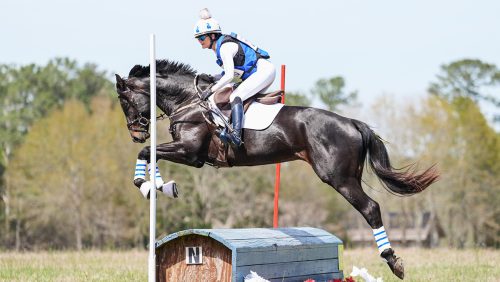Good horsemen are great listeners. Not necessarily of people, but of horses, who are constantly telling us how they feel and what they are thinking, if we just take a moment to pay attention. Good veterinarians are also great listeners, not just of horses, but of their owners, trainers, grooms, riders and farriers as well.
In vet school we are taught to take a thorough history when an animal is brought in, as it often helps us arrive at a diagnosis sooner. It’s important to know when a horse comes to the clinic with colic signs, if it lives on coastal hay or it hasn’t been wormed in two years.
But when we are on the lameness service, we ignore the owner, jog the horse off, and start blocking out the lameness that we see. This works just fine when the horse is really lame and needs a diagnosis. But when the trainer or rider of a performance horse walks in with a specific complaint, we need to teach our students to shut up and listen for a minute (not easy for me).
When we work up cases by what we see and not what the client is worried about, we frequently end up with poor results and disappointed clients. After getting the history, we often get lucky and find that the complaint matches the lameness findings.
For instance, it’s not uncommon to hear, “He wants to jump off to the left” in a horse with a right front lameness. Diagnose the lameness, and you’ve probably addressed the complaint.
But often enough, we are asked to look at horses who are basically quite sound, yet the trainer isn’t happy with how the horse is performing. We have two choices: A. Tell them they’re crazy in as nice a way as possible. B. Listen very carefully, and examine the horse thoroughly.
ADVERTISEMENT
Even if we have a mild lameness, we need to take a very careful history, because once we’ve diagnosed the lameness, we need to determine whether or not that has anything to do with the problem. Horses in a serious job are often sore in many places that effect their performance. Not all of those places make them limp, but they do often change the horse’s way of going or his general attitude. And if we want to get good results for our clients, we need to make sure our exam pays respect to their concerns. Because the whole show will know whether or not you’ve helped the horse the next time it walks in the ring.
By the same token, owners and trainers should have patience with their veterinarian who is trying to arrive at an accurate diagnosis. Performing diagnostic nerve blocks is a tough sport. Surprisingly enough, sticking needles into the legs of a 1000 pound beast with big hooves and lightning fast reflexes isn’t as much fun as it sounds. And it certainly isn’t a very profitable use of our time.
But as much as we’d be happy to poke and pray with some joint injections, then take the money and run, we really like to get it right. As often as possible. Yet many times we’re asked to just take our best guess and move on. Certainly a shotgun approach to injecting joints, while expensive, can make a lot of horses feel better. Unfortunately, in sport horse medicine, quite often the biggest problems are not fixed by joint injection. We can continue to bury our heads in the sand with those horses who are sore from something not joint related, getting minimal improvement, until we push the horse to the point it’s broken. Or we can make the adult decision to confront the issue head on, when it is mild, and make shoeing, physical therapy and career decisions around it. And quite often, horses with otherwise scary sounding areas of injury, can be managed with sobriety and have long and successful careers. In my opinion, confronting bad news with an optimistic and progressive approach will always beat ignoring reality until it bites you on the butt.
In human medicine, work is being done to figure out how to prevent diseases that are difficult to cure. Cancer will always be with us, but there are few good treatments. A study recently published in Lancet showed a 19 percent reduction in cancer by people taking an aspirin a day for three years, and a 30 percent reduction in those taking it daily for more than five years. This is because inflammation is an important precursor to cells becoming cancerous. We need to think this way in veterinary medicine. Lameness is unavoidable in a population of working horses, just as cancer is unavoidable in a population of people. But that doesn’t mean that for each individual, we shouldn’t be making smarter choices, to minimize their risks.
If you can find a way to pay your vet to be a management consultant, not just a procedure performer, you will find your horses competing better and for longer.
Alex G. Emerson, DVM, provides sports medicine services for Rood and Riddle Equine Hospital in Lexington, Ky. and Wellington, Fla. Views expressed here do not necessarily reflect those of other veterinarians at RREH. Read his older blogs on the Sidelines website.















